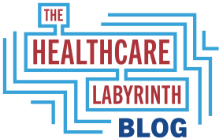This blog is the last of a four-part series on Health Plan Economics. In this series, I plan on simply laying out some important trends in different lines of business and some of the impacts from a healthcare economics standpoint. Here is my plan, subject to change of course based on breaking news:
April 25 – Medicare Advantage and Rumors Of Humana’s acquisition by Cigna
April 29 – How The Lapse Of Premium Subsidies Could Hurt The Exchanges’ Relatively Stable Finances
May 2 – How Falling Medicaid Enrollment is Impacting Health Plans and Providers Alike
May 6 – Other Healthcare Trends And Their Economic Impacts On Plans
—
Part 4 – Other Healthcare Trends And Their Economic Impacts On Plans
We are at the end of our four-part series on health plan economics. This last installment is on some healthcare trends we see in the marketplace and how that impacts the economics of health plans. Some of them touch upon issues discussed in the last three installments.
Enrollment:
As you can imagine, enrollment is everything in health plans. Enrollment drives revenue and usually means less risk as the law of large numbers means a healthier profile. But that is not always the case.
Overall, in Medicare Advantage (MA) we see rising enrollment, which tends to add demonstrably to health plan revenue and margin. At the same time, due to missteps in terms of building up too many benefits over time, we currently see some plans in financial trouble. By overdoing it on benefit offerings, medical expense has risen considerably. Losses mean they must pare back benefits to return to customary margins demanded by investors. Some of the financial pressure does stem from regulatory changes and rate hikes that are too low.
In the Medicaid world, we are seeing falling enrollment due to the return of Medicaid redeterminations. This major shedding of enrollment means a sicker cohort or adverse selection now exists in many plans. Plans have successfully lobbied their state Medicaid agency partners for more dollars to offset higher risk.
In the Exchange world, since the Biden administration came to power, we see a major commitment to drive enrollment in the Exchanges. Enhanced premium subsidies combined with the shedding of Medicaid lives has driven enrollment nationally in the Exchanges to record highs. This has stabilized the Exchanges – a good financial picture, low premium hikes, greater plan participation, and better network access.
Employer group coverage, the mainstay of American healthcare, weathered the COVID pandemic storm well. It has been remarkably stable, profitable, and resilient.
Rate hikes:
Rate hikes have been very low for MA plans in 2024 and 2025. This combines with other factors to create financial woes for MA plans. The rate problem will continue at least through 2026 due to the rollout of a controversial risk adjustment formula change. On the flip side, Medicaid managed care plans have been successful advocating for rate hikes as enrollment has dropped. This has been a great financial stabilizer for them.
Utilization and inflation:
Historic medical utilization has returned in healthcare and this too is driving increased medical expense. In addition, we are seeing moderately aggressive inflation and the continuing rise of drug prices. MA plans have seen rising medical loss ratios (MLRs), some hitting the low 90s when normal rates are in the low- to mid-80s. Medicaid plans generally see MLRs in the high ’80s or low ’90s. Interim and healthy rate increases have allowed Medicaid plans to buck even higher MLRs. Exchange plans and employer groups build inflation into their rates to the public and employers. While these have been reasonable thus far, premiums could increase in the future.
Quality focus:
There is a huge quality focus occurring in Medicare and Medicaid. The Star program continues to mature and MA plans are struggling to keep up. Well less than half of all MA contracts now receive 4 Star or greater ratings. It is a problem for plans big and small. This has major impact on revenue and the plans’ competitiveness. The trend will only become worse as stricter measures and the new Health Equity Index are introduced in coming years.
Medicaid is set to go on a Star quality journey over the next several years. The Medicaid Mega Rule set the stage and the Centers for Medicare and Medicaid Services (CMS) is finally laying out the blueprint for all states to adopt a Star-like quality bonus program. Given historic issues with quality in the program, many plans will struggle here.
The Exchanges, too, will grow into a Star quality program over time. Employers increasingly are asking health plans to improve quality peformance.
Regulatory mandates:
There are regulatory changes galore throughout healthcare. New interoperability mandates will require plans across lines of business to invest heavily in data exchanges to member apps, to other plans, and eventually between payers and providers. While this has great potential to streamline and lower costs over time, the short term means greater expense.
With interoperability comes mandates to process prior authorizations more quickly and stand up electronic submission processes, which could add further to administrative expense.
The National Committee for Quality Assurance (NCQA, the national private quality regulator) is also retiring so-called “manual chart chasing” for hybrid Healthcare Effectiveness Data and Information Set (HEDIS) quality measures in favor of integration with electronic medical record (EMR) systems. This could mean lower quality scores and revenue unless plans are ready for the conversion.
My guess is that regulators will also stop the manual chart submissions for risk adjustment in MA over time. The revenue impact here would be great.
A series of other MA and Medicaid regulatory changes have been passed, including network adequacy and wait times, quality, risk adjustment, transparency and reporting, prior authorization, accountability, Medicare and Medicaid integration, and more. All of this, too, increases administrative costs.
Price transparency:
Price transparency was a huge priority for both the Trump and Biden administrations. And there is no reason to believe this will change no matter who is president in 2025. Hospitals and health plans have been forced to make public rates with each other for several years now. While the rule is not perfect and will take time to mature, the postings reveal so much of what is wrong with our system. There is great disparity of rates between regions and even within regions. One plan may be paying a hospital one rate. That same hospital may be paid demonstrably more by another plan. Price transparency can eventually lower price and bring about site-neutral payment policies. Site-neutral payments, where the same service reimbursed the same across places of service/sites of care, is one key to bringing overall costs down.
Anti-trust and competitiveness:
The Biden administration has made antitrust and competitiveness in healthcare a major focus. And the issue is becoming a top priority for lawmakers on both sides of the aisle. Horizonal intergation (payers combining or providers combining) and vertical integration (the combination of payers and providers) have driven price up and not led to increased quality. The acquisition of providers by hospitals has changed practice patterns to higher-cost, hospital-owned settings. Private equity investments in both hospitals and provider groups need to be examined for how much is being taken out in margin and its impact on the quality of care. There is no question that consolidation drives costs up throughout the system.
Drug pricing:
Retail, specialty, and medical drugs are taking up a bigger and bigger share of the healthcare pie. Unfettered drug pricing is leading to leaps in healthcare costs and premiums. This can especially be seen in the Medicare program, where Part B premiums are heavily influenced by new drug introductions.
President Biden won approval of Medicare drug price negotiations for up to 60 Part D and Part B drugs over time. The pricing of the first ten is in flight and will take effect in 2026. In addition, a new law also caps the amount of inflationary increases drugs can have and returns excess increases as rebates to the federal government as well as reduced cost-sharing for Medicare enrollees. The Trump administration once proposed drug price setting against other nations for Part B drugs in Medicare.
American drug prices are materially greater than other developed countries and as prices continue to increase it means drugs take up more and more of the American healthcare pie. Year-to-year increases in drugs now rival increases seen at hospitals. So, drug price control could dominate any new presidential adminstration and successfully curb overall drug costs.
Capitol Hill is also very interested in reining in the behavior of pharmacy benefits managers in terms of banning spread pricing; bringing greater transparency to rebates and passing them through at the point of sale; and promoting the uptake of biosimilar drugs in lieu of expensive brand biologics.
Last, the proliferation of GLP-1 weight-loss drugs is creating huge problems for plans and employer groups. Medicaid and Medicare limit use to circumstances tied to the presence of disease states such as diabetes or cardiovascular disease. Despite this, GLP-1 costs in these programs will surge. In the employer group world, rules are more liberal and use of GLP-1s for being overweight or obese (without disease states being present) is increasingly being allowed. Statistics say more and more employers are allowing the use for general weight loss. In some cases, use has increased so dramatically that employers have ended coverage.
#medicare #medicareadvantage #medicaid #aca #obamacare #exchanges #coverage #stars #interoperability #pricetransparency #transparency #antitrust #drugpricing #ira #branddrugmakers #weightlossdrugs
— Marc S. Ryan





